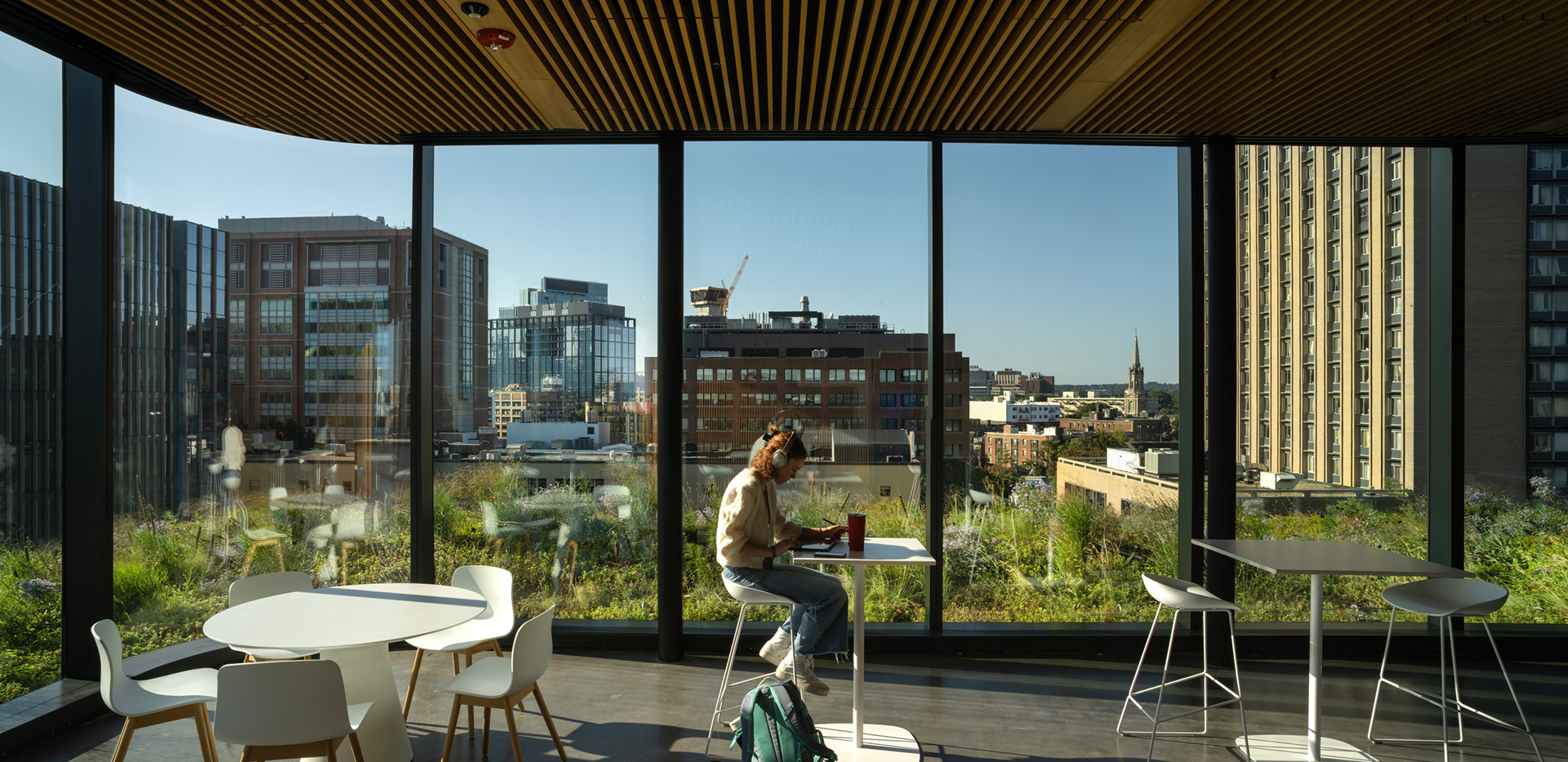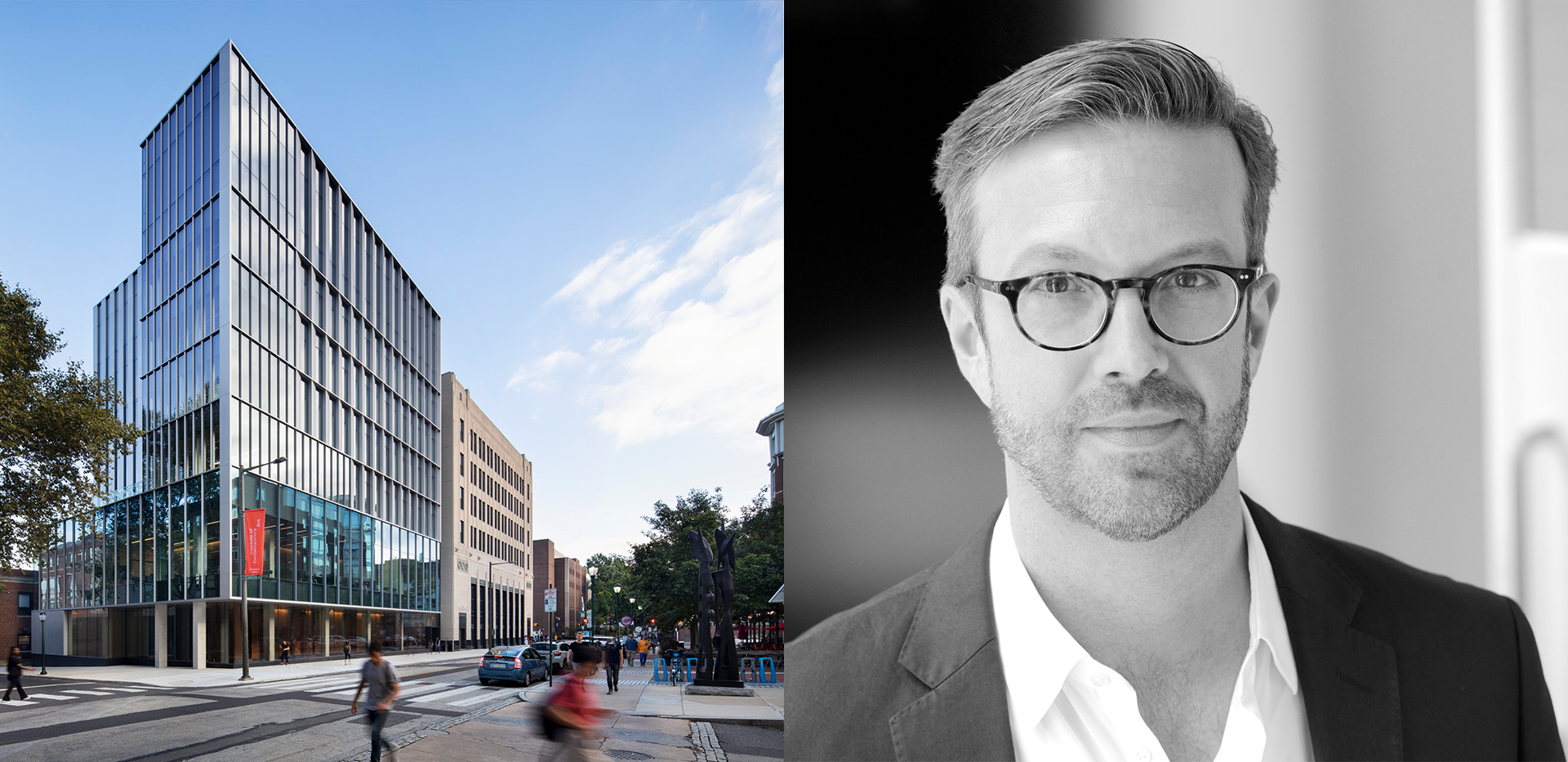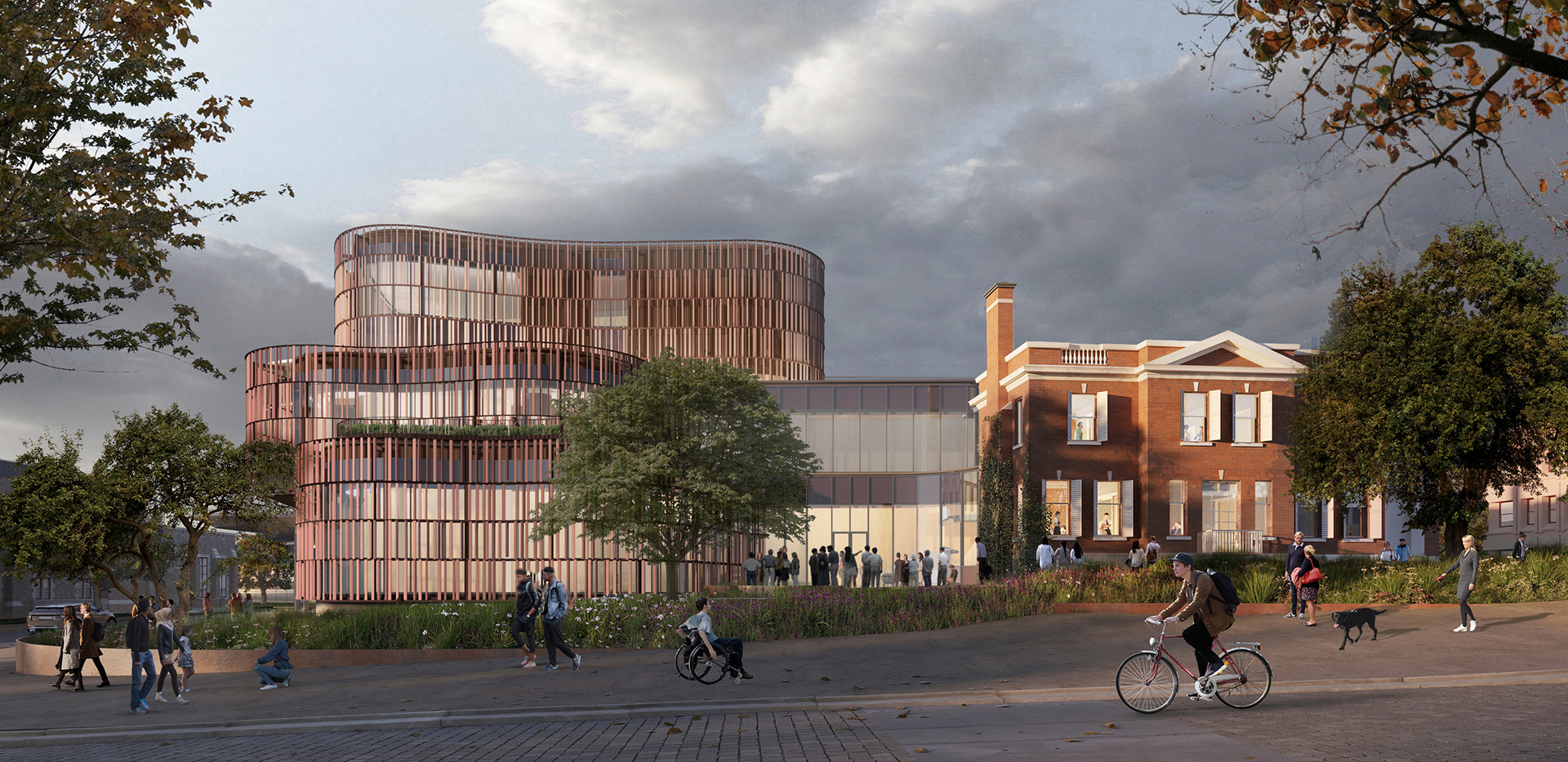Manifestos on the Climate Crisis

Article content
November 13, 2020
Click here to view Canadian Architect
By Geoffrey Turnbull, David Constable, Jessica Piper
To mark the first anniversary of Canada’s Architects Declare initiative, we’re publishing the original text of the declaration, signed by over 200 practices. We are also printing a climate statement issued by KPMB LAB—the firm’s research group—to highlight how individual firms are bringing this issue to their work and clients. Finally, a text by recent graduate Jessica Piper, which was selected in a Call for Manifestos by the Canadian Architecture Forums on Education, points to emerging practitioners’ perception of the urgency of the climate crisis.
Canadian Architectural Professionals Declare Planetary Health Emergency and Commit to Urgent and Sustained Action
Our interconnected crises of climate breakdown, ecological degradation, and societal inequity are the most serious issues of our time. The design, construction, and operation of our built environment accounts for nearly 40 percent of energy-related carbon dioxide (CO2) emissions, and pervasively impacts our societies and the health of the living systems that sustain us.
Building to support the intergenerational health of our communities and living systems will require rapid paradigm shifts in thought and action for everyone working in the design, construction, and procurement of our built environments. Together with our clients, collaborators, and communities, we need to develop our buildings, cities, and infrastructures as indivisible components of larger nested living systems—interconnected, resilient, and regenerative, now and for future generations.
The knowledge, research, and technologies exist for us to begin this transformation now. Through collective will and collaborative action, we will elevate, empower, and evolve our sustained action.
Accordingly, we commit to:
- Raise awareness of these interconnected crises, and the impact the built environment has on them, with our clients and colleagues;
- Take immediate action through our projects, and in our capacities as advisors, advocates, educators, and enablers within our communities, cities, and supply chains.
Towards this, we further commit to:
- Design for holistic reductions in greenhouse gas emissions, and advocate for investments in a rapid transition to resilient climate-positive alternatives;
- Eliminate waste and harm, and support a rapid transition to circular economies;
- Design for holistic health, resilience, and regeneration; respecting the rights and wisdom of Indigenous Peoples as outlined in the UN Declaration on the Rights of Indigenous Peoples;
- Adopt regenerative design principles and practices to build the necessary capability to design and develop projects and environments that go beyond the standard of net zero in use;
- Advocate for the rapid systemic changes required to address the climate and ecological health crises, as well as the policies, funding priorities, and implementation frameworks that support them.
KPMB LAB: Climate Statement
Climate change is the problem
Climate change is the defining issue of our time. The world is already 1°C warmer than it was in pre-industrial times and our current infrastructure will take us past 1.5°C by mid-century. The next ten years are pivotal. In order to avoid 2°C of warming—widely understood as the tipping point into ecological catastrophe—we must dramatically reduce greenhouse gas emissions. Buildings are associated with approximately a third of all greenhouse gas emissions, so architects have a special responsibility to help minimize the amount of warming to come, and to help our societies become resilient and adaptable in the face of the warming we have already caused.
We have the answers
The technology needed to address the challenge of climate change already exists. Energy production across all industries accounts for almost 80 percent of global GHG emissions. Simply put, to arrest global warming we need to power the global economy with clean electricity instead of fossil fuels. Our imperative as architects is to electrify all buildings, both anticipating and helping to bring about a large-scale societal shift to clean electric power.
In markets with clean electricity grids, this largely eliminates operational GHG emissions from buildings. In markets where the electricity is generated in a carbon-intensive way, electrified buildings are capable of becoming low/no carbon buildings when a clean electricity source becomes available and can reduce the current GHG impact with project-specific clean generation.
The resilience and adaptability measures required to address the warming already underway are more complex, and will require project-specific design ingenuity. But here too, the technologies required to meet the challenges exist.
Growth is part of the solution
Much of the current public conversation about addressing climate change presumes a false narrative: that we have to make a choice between privileging the economy or the environment—doing what is best for one entails sacrificing the other. This is false. Making the investments required to meet the challenge of climate change will generate economic activity in the short term, and unlock the potential for innovation across a range of industries that will power economic growth over the long term. Indeed, leading investors are concluding that “climate risk is investment risk” and sustainability-integrated portfolios will provide better risk-adjusted returns over time.
Taking a step back, we see that economic growth is vital for human well-being. While not every instance of growth may be desirable, in aggregate, the rapid economic growth the world has witnessed in the past generation is nothing short of a miracle. In the last 35 years, while the global population has doubled from 3.7 billion to 7.7 billion, the number of people living in extreme poverty has fallen from 1.5 billion to under 750 million (a proportional decline from over 42 percent of the population to less than 10 percent). Maintaining this level of growth is critical to the well-being of billions of our fellow citizens.
Simultaneously, while the global population continues to grow to an estimated levelling off point of 10 billion people, mass urban migration has resulted in an unprecedented need for new buildings. The imperative for architects is clear: we must design the buildings needed for our growing population in a climate-positive way, while continuing to drive the economic growth that advances human well-being.
The next ten years will be transformational
The next ten years are of critical importance to limiting the ultimate amount of warming that the globe will experience. The IPCC indicates that limiting global warming to 1.5°C would require reducing GHG emissions by 45 percent from 2010 levels by 2030, reaching net zero around 2050. Indeed, the expected emissions from existing infrastructure over its service life is enough to take the earth beyond 1.5°C of warming. Thus, every decision moving forward needs to be the right decision—there is no room for kicking the can further down the road.
These years will also be transformational in the building industry. In Canada, progressive jurisdictions have implemented building standards designed to dramatically elevate the level of performance of buildings being built by 2030. National and provincial codes are following this lead and, consequently, we can expect a generational shift in building practice over the decade.
Architects have a unique opportunity
Many of the loudest voices in the climate change conversation today make solutions sound complicated and unattainable. In reality, many of the best climate change solutions will have the wonderful consequence of making life as we know it better.
Architects have a role to play in depicting that desirable future, to catalyze action today. Critically, this future is not a compromise or a sacrifice—it is a better, healthier, more enjoyable world that, given the option, anyone would choose.
KPMB is committed to championing this vision and working with our clients to make it a reality.
-Geoffrey Turnbull (Director of Innovation) and David Constable (Principal), KPMB
Biological architectures: Designing for equitable futures
1 Architecture and urban design have enormous and long-lived impacts on our collective economic, social and environmental well-being. The cities and buildings we have crafted over decades, centuries, and millenia are some of the most egregious offenders in the ongoing anthropogenic climate crisis. Over their lives, the buildings architects design are responsible for approximately 40 percent of both energy consumption and carbon emissions worldwide.
2 As we face the ongoing climate crisis, it is imperative that we transition away from the finance-driven development that currently characterizes ‘green design’ towards a paradigm that values social equity and environmentally sound approaches over short-term financial gain. This necessitates a pivot away from traditional, linear design and building strategies that consider buildings as discrete independent entities, into a comprehensive, systemic and resilient approach to design. Social sustainability is especially important to develop in this context: sustainable design principles simply cannot be effective if they are only accessible to the wealthiest, most privileged sectors of society.
3 A systemic approach to design must include active work towards building social equity; the first step in this process is to include diverse voices in decision-making processes. We need to expand, amplify and promote these voices if we wish to build equitable cities that respond to the complex and disparate needs of our local and global communities.
4 Considerations of equity in development must extend past the anthropocentric worldview that has dominated architectural thinking since the days of Vitruvius. Biocentric principles allow for a reworking of our collective worldview to consider, account for, and value the millions of non-human species currently living on earth. Merely ensuring that there are sufficient renewable resources to accommodate each human on earth could result in a catastrophic global ecosystemic collapse. Ecologists calculate if 12 percent of the earth’s biocapacity is allocated for other species, it should be sufficient to maintain systemic resilience. Today we use 175 percent of Earth’s biocapacity each year for humanity alone.
5 Biomaterials offer plausible material options in the pursuit of environmentally responsible design practice. Biomaterials are derived from living organisms and systems, and can be used as potential low-carbon alternatives to traditional building materials. As biomaterials are grown rather than extracted, in many cases, they can be developed as local crops, mitigating the energy and carbon costs associated with extensive transportation and processing.
6 Substantial research, analysis, and theoretical work supporting a paradigmatic transition towards equitable design practices has been ongoing for decades. Examples include applied biomimicry, which takes design inspiration from biological organisms and systems, facilitating the discovery of unique and efficient solutions to design problems. Regenerative design is a more systemic approach that aims to restore, renew and revitalize energy and resources through design. The framework of regenerative design recognizes the complex, interdependent nature of ecosystems, and acknowledges the place of human community and economy within them. Architects and architecture must acknowledge their historic and ongoing failures to meaningfully address social inequity and environmental sustainability. The cascading feedback loops of anthropogenic climate change necessitate a swift and emphatic transition towards a new paradigm of comprehensive systemic thinking in design. Through applied principles of biocentrism and regenerative design, and the use of renewable biomaterials, biological architectures are one of many possible trajectories towards an aspirational, equitable future.
-Jessica Piper, University of Manitoba M.Arch graduate
)
)
)